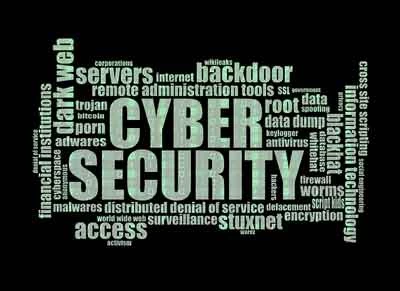Addressing Cybersecurity Concerns in BAS for Energy Management

Building Automation Systems (BAS) offer a powerful tool for optimizing energy consumption in buildings. However, as BAS become increasingly connected and collect more sensitive data, cybersecurity concerns become paramount. This article delves into the cybersecurity risks associated with BAS used for energy management, explores best practices for securing BAS systems, and outlines strategies for mitigating these risks.
Visit Our Building Automation Study Course
The Evolving Threat Landscape: BAS as a Target
BAS play a critical role in managing energy consumption by controlling various building systems like HVAC, lighting, and security. They collect and transmit sensitive data, including:
- Building occupancy patterns
- Energy usage statistics
- Equipment operation parameters
- Environmental sensor data (temperature, humidity)
This data, if compromised, can be exploited by attackers in several ways:
Disrupting Building Operations: Hackers could manipulate settings within BAS, causing disruptions to building systems. This could involve creating uncomfortable room temperatures, disrupting lighting schedules, or even compromising security systems.
Data Breaches and Privacy Violations: Sensitive data collected by BAS, particularly occupancy information, could be leaked, raising privacy concerns for building occupants.
Energy Theft and Manipulation: Malicious actors could exploit vulnerabilities in BAS to manipulate energy consumption data or gain control of energy-consuming equipment, potentially leading to financial losses for building owners.
Using BAS as a Launchpad for Further Attacks: Compromised BAS could be used as a springboard to launch attacks on other connected systems within the building network, potentially leading to wider security breaches.
Building a Strong Defense: Best Practices for BAS Security
Several best practices can mitigate cybersecurity risks associated with BAS for energy management:
Network Segmentation: Segmenting the BAS network from the main building network creates a barrier, limiting the potential impact of a security breach on other critical systems. This isolates BAS and minimizes the attack surface for malicious actors.
Secure Communication Protocols: Implementing secure communication protocols like HTTPS and SSH for data transmission between BAS components protects against data interception and manipulation. These protocols encrypt data in transit, ensuring only authorized entities can access it.
Strong Password Management: Enforce strong password policies for all user accounts on the BAS system. Regular password changes and multi-factor authentication add additional layers of security, making it more difficult for unauthorized users to gain access.
System Hardening: Implement security best practices to harden the BAS system itself. This includes disabling unnecessary services, keeping operating systems and software applications up to date with the latest security patches, and configuring system access control settings to restrict access to authorized personnel only.
User Access Control: Implement a robust user access control system that grants access to the BAS based on the principle of least privilege. This ensures that users only have access to the information and functionalities they need to perform their assigned tasks, minimizing the potential damage caused by accidental or malicious actions.
Cybersecurity Awareness Training: Provide regular cybersecurity awareness training to building staff and personnel with access to the BAS. This training should educate users on phishing attempts, social engineering tactics, and best practices for recognizing and reporting suspicious activity related to the BAS system.
Staying Vigilant: Continuous Monitoring and Updating
Maintaining a secure BAS environment requires ongoing vigilance:
Security Monitoring and Intrusion Detection: Implement security monitoring systems and intrusion detection tools to identify and respond to potential attacks targeting the BAS. These systems can detect suspicious activity and alert security personnel to take appropriate action.
Vulnerability Management: Regularly assess the BAS for vulnerabilities through vulnerability scanning and penetration testing. This proactive approach helps identify security weaknesses and allows for timely remediation before they can be exploited by attackers.
System Updates and Patch Management: Promptly install security patches and updates for the BAS operating system, software applications, and firmware versions used on connected devices. Patching vulnerabilities in a timely manner is crucial to maintain a secure BAS environment.
Building a Collaborative Defense: Shared Responsibility
Securing BAS for energy management requires a collaborative effort from various stakeholders:
Building Owners and Facility Managers: Investing in robust cybersecurity measures for BAS is crucial. Building owners need to allocate resources for implementing security best practices, user training, and ongoing vulnerability assessments to protect their BAS systems.
BAS Manufacturers: BAS manufacturers have a responsibility to develop secure systems with robust security features, regular security updates, and clear documentation on secure configuration practices.
System Integrators and Security Specialists: Involving experienced system integrators and security specialists during BAS implementation is essential. They can advise on secure network segmentation, user access control, and vulnerability management strategies.
IT Security Teams: Collaboration between BAS administrators and IT security teams within an organization is crucial. IT security teams possess expertise in securing enterprise networks and can provide valuable guidance on integrating BAS securely within the overall building network architecture.
The Cost of Security: Balancing Investment with ROI
Securing BAS requires investment in security tools, training programs, and ongoing maintenance. However, these investments can be outweighed by the potential costs of a cyberattack:
Financial Losses: Data breaches, compromised equipment operation, or energy theft resulting from a cyberattack can lead to significant financial losses for building owners.
Operational Disruptions: BAS disruptions caused by cyberattacks can lead to uncomfortable working conditions, impacting employee productivity and potentially resulting in lost revenue.
Reputational Damage: News of a successful cyberattack on a BAS system can damage an organization's reputation, potentially deterring tenants and impacting future business prospects.
By adopting a risk-based approach, stakeholders can make informed decisions on security investments, balancing the cost of implementing best practices with the potential financial and reputational damage that could result from a cyberattack.
Building a Secure Foundation for Energy Management
Building Automation Systems offer a powerful tool for optimizing energy consumption, but their effectiveness hinges on robust cybersecurity measures. By implementing best practices like network segmentation, user access control, and system updates, stakeholders can mitigate the risks associated with cyberattacks. Furthermore, ongoing monitoring, vulnerability management, and collaborative efforts among building owners, BAS manufacturers, system integrators, and IT security teams are crucial for building a secure foundation for energy management. This collaborative approach ensures BAS can function effectively without compromising energy savings or building security, paving the way for a more sustainable and secure built environment.









